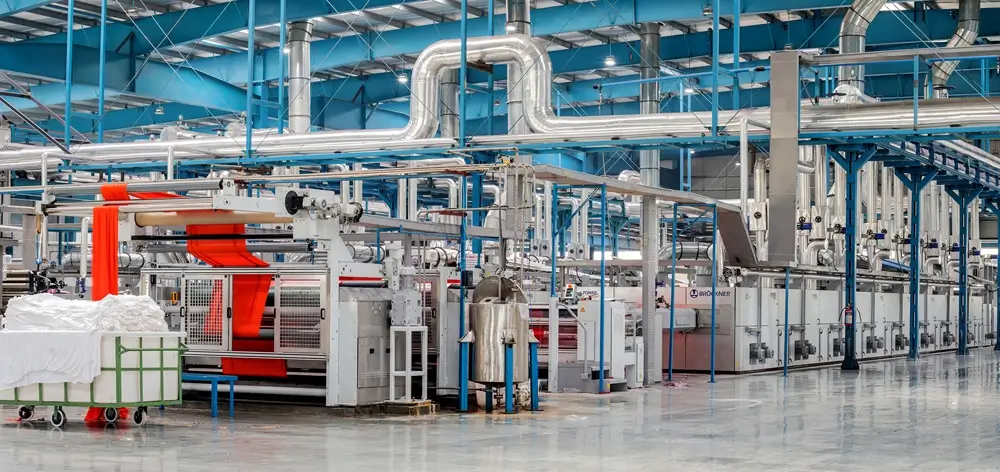· Jay Smith · Articles · 6 min read
The Role of IT in Streamlining Logistics and Supply Chain Operations
These operations face several challenges such as inventory management, transportation delays, and lack of visibility. To overcome these challenges and streamline operations, organizations are increasingly relying on IT solutions.

Introduction to logistics and supply chain operations
Logistics and supply chain operations play a crucial role in the success of any organization. They involve the movement of goods, information, and resources from one point to another, ensuring the timely delivery of products to customers. Efficient logistics and supply chain operations are essential for reducing costs, improving customer satisfaction, and gaining a competitive edge. However, these operations face several challenges such as inventory management, transportation delays, and lack of visibility. To overcome these challenges and streamline operations, organizations are increasingly relying on IT solutions.
Importance of efficient logistics and supply chain operations
Efficient logistics and supply chain operations play a crucial role in the success of any organization. Timely and accurate delivery of products and services is essential for maintaining customer satisfaction and loyalty. In addition, streamlined operations help reduce costs and improve overall efficiency. However, achieving efficiency in logistics and supply chain operations can be challenging due to various factors such as complexity, uncertainty, and limited visibility. This is where the role of IT becomes crucial in streamlining these operations.
Challenges faced in logistics and supply chain operations
Challenges faced in logistics and supply chain operations include complexity of global networks, uncertainty in demand and supply, and inefficient manual processes. These challenges can lead to delays, errors, and increased costs. To overcome these challenges, organizations are turning to IT solutions that offer automation, real-time visibility, and data analytics. By leveraging technology, companies can streamline their operations, improve efficiency, and gain a competitive edge in the market.
Role of IT in streamlining logistics and supply chain operations
Automation and digitization of processes
Automation and digitization are key components in streamlining logistics and supply chain operations. By automating manual tasks and digitizing paper-based processes, organizations can significantly improve efficiency and reduce errors. This allows for faster processing times, better accuracy, and enhanced productivity. Additionally, automation and digitization enable real-time data capture and integration, providing visibility into the entire supply chain. With the ability to track shipments, monitor inventory levels, and analyze data, organizations can make informed decisions and quickly respond to changes in demand or supply. Overall, the adoption of IT solutions for automation and digitization is crucial for organizations looking to optimize their logistics and supply chain operations.
Real-time tracking and visibility
Real-time tracking and visibility play a crucial role in streamlining logistics and supply chain operations. With the advancement of IT solutions, organizations can now monitor and track their shipments in real-time, allowing them to have better control over their inventory and delivery processes. Network Engineering is one area where IT has made significant contributions, enabling organizations to establish efficient and reliable communication networks. By leveraging IT infrastructure, companies can ensure seamless connectivity and data exchange between different stakeholders involved in the supply chain. This enhances coordination and collaboration, leading to improved operational efficiency and faster decision-making.
Data analytics and predictive modeling
Data analytics and predictive modeling play a crucial role in streamlining logistics and supply chain operations. By analyzing large volumes of data, organizations can gain valuable insights into customer behavior, demand patterns, and operational inefficiencies. These insights enable them to make data-driven decisions and optimize their processes. Predictive modeling, on the other hand, allows organizations to forecast future demand, identify potential bottlenecks, and proactively address them. With the help of advanced analytics tools and techniques, companies can improve their forecasting accuracy, reduce inventory holding costs, and enhance overall operational efficiency.
Benefits of IT in logistics and supply chain operations
Improved efficiency and cost savings
IT plays a crucial role in improving efficiency and achieving cost savings in logistics and supply chain operations. By automating and digitizing processes, organizations can streamline their operations and reduce manual errors. Real-time tracking and visibility provided by IT systems enable better monitoring and control of the entire supply chain, ensuring timely delivery and minimizing delays. Additionally, data analytics and predictive modeling help in identifying trends, optimizing routes, and making informed decisions. Overall, the integration of IT solutions in logistics and supply chain operations leads to improved efficiency, reduced costs, and enhanced decision-making capabilities.
Enhanced customer satisfaction
Enhanced customer satisfaction is one of the key benefits of IT in logistics and supply chain operations. Through real-time tracking and visibility provided by IT systems, customers can easily track their orders and have a clear understanding of the delivery status. Additionally, IT enables efficient communication between customers and logistics providers, ensuring smooth coordination and timely updates. With improved customer satisfaction, organizations can build strong relationships with their customers, leading to increased loyalty and repeat business.
Optimized inventory management
Optimized inventory management plays a crucial role in ensuring smooth logistics and supply chain operations. Effective inventory management enables organizations to minimize stockouts, reduce carrying costs, and improve order fulfillment. By leveraging IT solutions such as inventory management software and warehouse management systems, companies can gain real-time visibility into their inventory levels, track product movement, and automate replenishment processes. This not only enhances operational efficiency but also enables better decision-making through data-driven insights. Additionally, IT-enabled inventory management facilitates effective demand forecasting and enables organizations to align their inventory levels with customer demand, reducing the risk of overstocking or understocking. Overall, IT plays a vital role in optimizing inventory management and streamlining the entire logistics and supply chain process.
Conclusion
The growing importance of IT in logistics and supply chain operations
In today’s digital age, IT plays a crucial role in streamlining logistics and supply chain operations. With the automation and digitization of processes, organizations can improve efficiency and reduce costs. Real-time tracking and visibility enable better monitoring of shipments and faster response to any issues. Data analytics and predictive modeling provide valuable insights for decision-making and optimization. By embracing IT solutions, companies can achieve improved efficiency, enhanced customer satisfaction, and optimized inventory management.
Future trends and advancements in IT for logistics and supply chain
As technology continues to evolve, there are several future trends and advancements in IT that are set to revolutionize logistics and supply chain operations. One of the key trends is the integration of artificial intelligence (AI), which can automate decision-making processes and optimize resource allocation. Another trend is the adoption of blockchain technology, which can enhance transparency and security in supply chain transactions. Additionally, the Internet of Things (IoT) is expected to play a significant role in logistics and supply chain operations, enabling real-time monitoring and tracking of goods. These advancements in IT have the potential to streamline operations, improve efficiency, and reduce costs for organizations in the logistics and supply chain industry.
The need for organizations to embrace IT for competitive advantage
In today’s competitive business landscape, organizations that embrace IT for their logistics and supply chain operations gain a significant competitive advantage. By leveraging advanced technologies such as automation, digitization, and data analytics, companies can streamline their processes, improve efficiency, and reduce costs. Real-time tracking and visibility enable better decision-making and timely interventions, while predictive modeling helps organizations anticipate demand and optimize inventory management. Furthermore, IT-driven logistics and supply chain operations enhance customer satisfaction by providing accurate and timely information. As technology continues to evolve, organizations must stay updated with the latest trends and advancements in IT to stay ahead of the competition.



